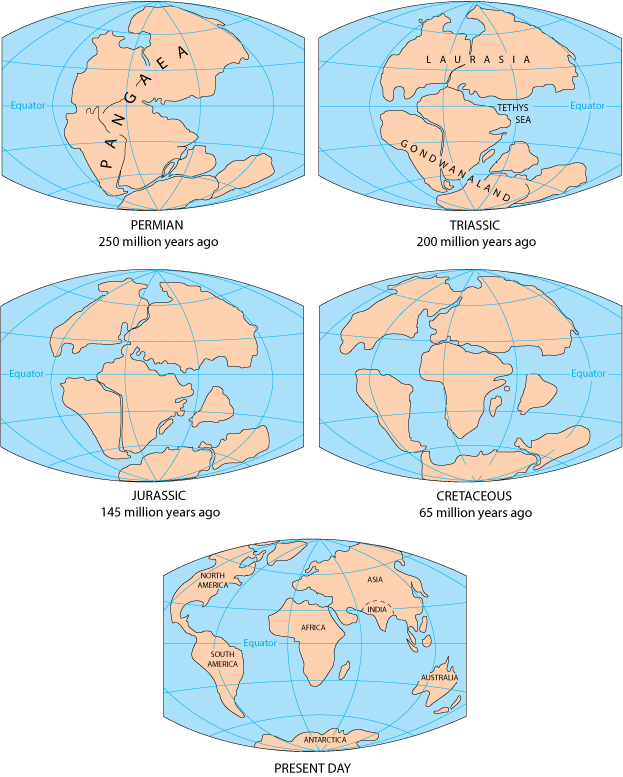It was. Hundreds of millions of years ago.
Western North America may have once been joined to Australia, a hypothesis that a local mining exploration company is banking on to help it find riches in the Yukon.
The theory is that if Australia and the Yukon were once joined, the two areas would share some geological DNA. So what is happening mineral-wise in Australia may also be happening in the Yukon.
And what's happening in Australia is the Olympic Dam mine, a multi-mineral ore body that includes the world's largest uranium deposit and fourth-largest remaining copper deposit, as well as significant amounts of gold and silver.
Due to plate tectonics the plates under the continents slip and slid over and under and along each other.
Thus producing widely separated rock formations common in many mountain regions, like ophitic rocks and serpentines. And so living in areas where the earth is alive and active, rather than dormant, humans associated the ever present geological striations of the earth with serpents the oldest diety/fetish we have.
To early humans the earth was alive, rock art representations of serpents, as well as the idea of painting with ophitic stone pigments on ophitic stone, showed a reverence for the sacred space that was stone walls, stone outcrops, the serpent image carved out of the serpent forces around us. Which gives new meaning to Snakes On A Plain.
In geologic terms, a plate is a large, rigid slab of solid rock. The word tectonics comes from the Greek root "to build." Putting these two words together, we get the term plate tectonics, which refers to how the Earth's surface is built of plates. The theory of plate tectonics states that the Earth's outermost layer is fragmented into a dozen or more large and small plates that are moving relative to one another as they ride atop hotter, more mobile material. Before the advent of plate tectonics, however, some people already believed that the present-day continents were the fragmented pieces of preexisting larger landmasses ("supercontinents"). The diagrams below show the break-up of the supercontinent Pangaea (meaning "all lands" in Greek), which figured prominently in the theory of continental drift -- the forerunner to the theory of plate
tectonics.
According to the continental drift theory, the supercontinent Pangaea began to break up about 225-200 million years ago, eventually fragmenting into the continents as we know them today.
Find blog posts, photos, events and more off-site about:
Yukon, Australia, diamonds, Serpentine, Ophitic rocks, python, ophites, ophidian, gnostics, serpent worship, totems, primitive peoples, religion, rituals, magick, rites, cave paintings,archeology, archeologist, San, 70,000yearsago,
Simon WinchesterEarthquake,
Krakatoa, Volacanos, A Crack In the Edge of the World, Africa,
Japan, Earth-In-Upheaval, East, Timor, Earth-Sciences, tectonic plates, San Fransisco,


